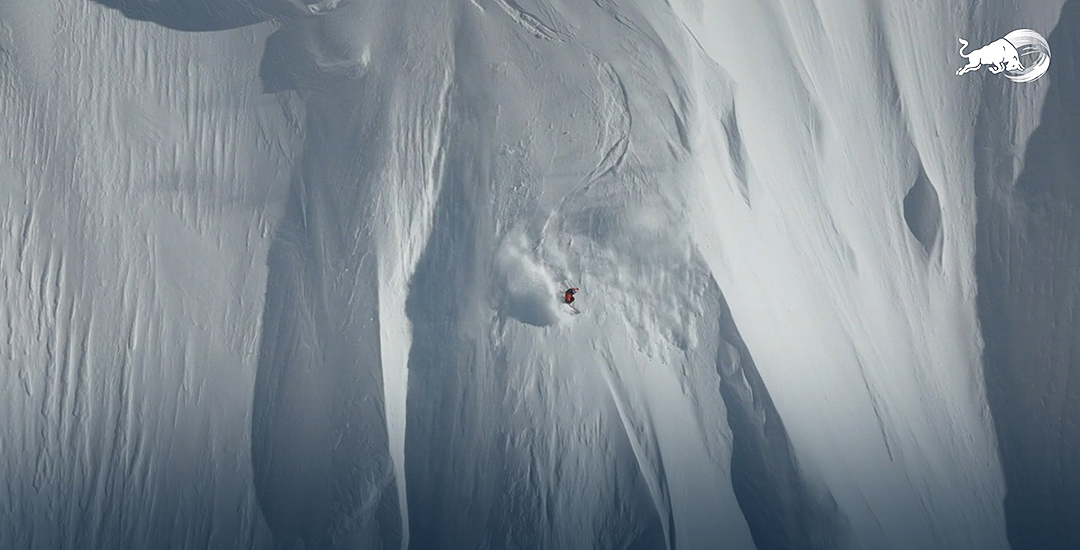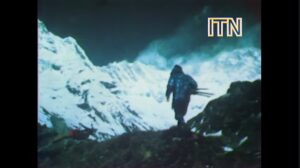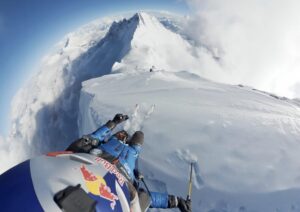In Kai Jones’ Falling Into Place, a teenage skiing phenom fights to survive and recover after a devastating cliff fall.
“I didn’t think anything could stop me,” Jones admits, over drone footage of his own daring skiing. But that was before.
Skiing from a very young age, Jones grew up watching his father’s films, compilations of the most impressive skiing of the year. Jones was starring in the films by the time he was 11. His skills and young age, combined with professional-quality video, made his videos go big on social media.
Rather than being intimidated by the attention, Jones was motivated to go further, train harder, and take on riskier lines. A Red Bull sponsorship, award nominations, and massive viewcounts followed.
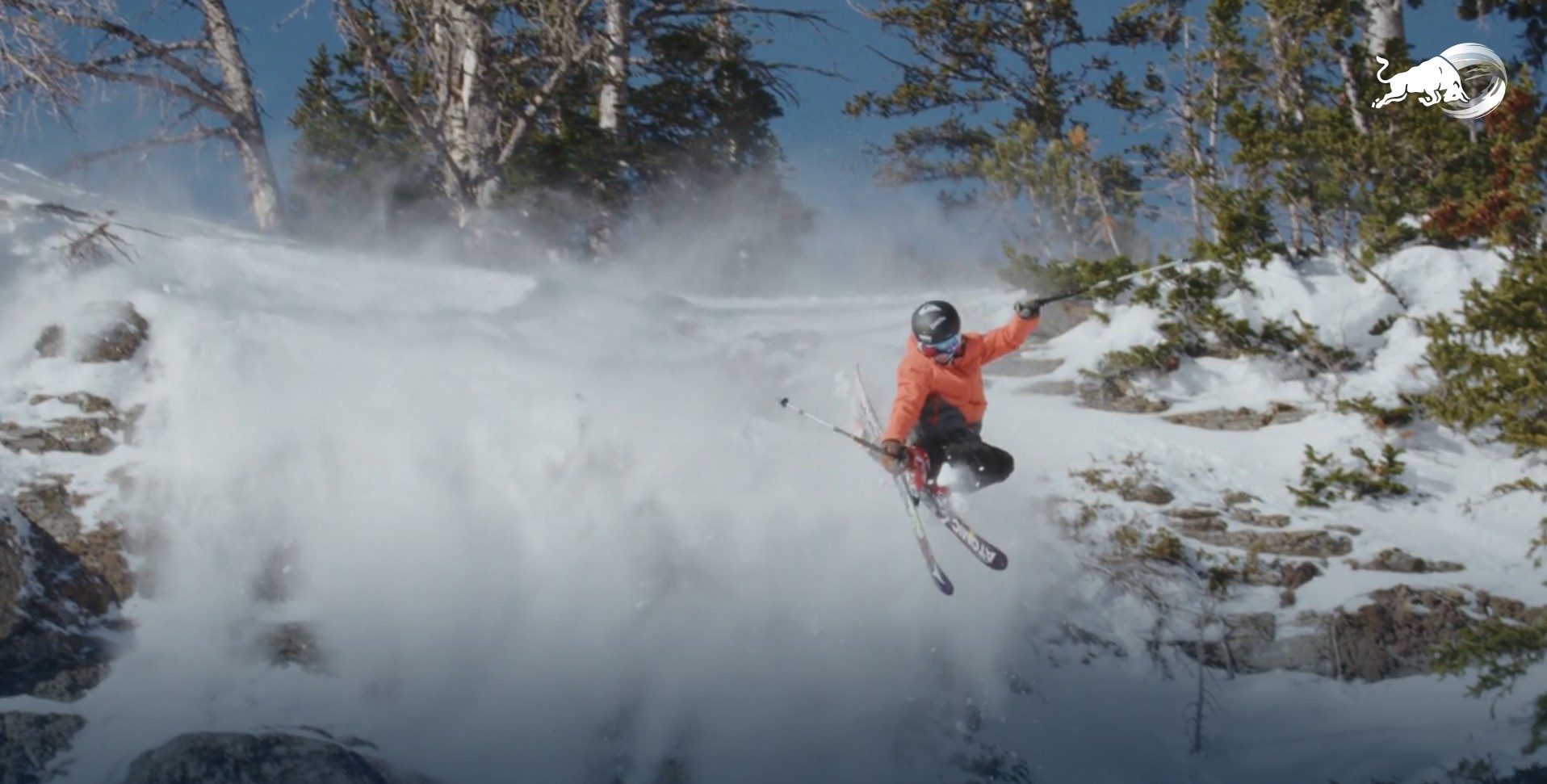
Jones skiing at age 11, with his father’s ski film company recording.
The accident
Before every session, Cruze explains, they would physically draw the intended line on a photo, scouting out the location. On the fateful day, however, Kai deviated from the line. It was late, with limited daylight left, he explains, and he wasn’t thinking about the plan.
We see, recorded in high definition, as Jones begins down the line, jumps, and lands hard, crumpling and rolling down the cliff with snow piling after and on top of him.
“I was like…this isn’t real,” Jones recalls. Lying on the slope, he felt for his legs and found the protruding bones of a compound fracture.
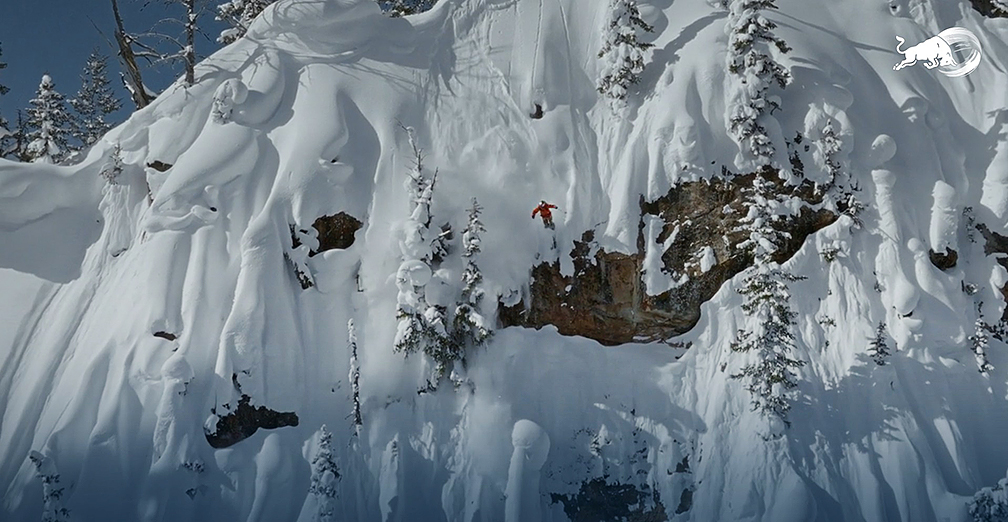
The moment before Jones’ devastating fall. Photo: Screenshot
Cruze rushed up the slope on a snowmobile, arriving to see Kai, screaming, with both legs mangled. It was nearly freezing, and they were 11km into the backcountry, halfway up a steep slope. They immediately called for a helicopter evacuation.
The search-and-rescue chopper arrived quickly, but to be lifted up, they had to straighten Kai’s legs. He describes the sickening feeling of having his shattered bones forced into place, as onscreen we see that the cameras, still recording, captured him thrashing and screaming.
He was rushed into surgery at the hospital, where they discovered his legs were more “destroyed” than simply broken. Days later, Kai almost died again when he became critically anemic, missing almost half of his blood.
When he went to check out, they discovered the meniscus, cartilage which acts as a shock absorber for the knee, had become pinched in the fracture site. In both legs. A potentially career-ending complication, for which he’d need another surgery.
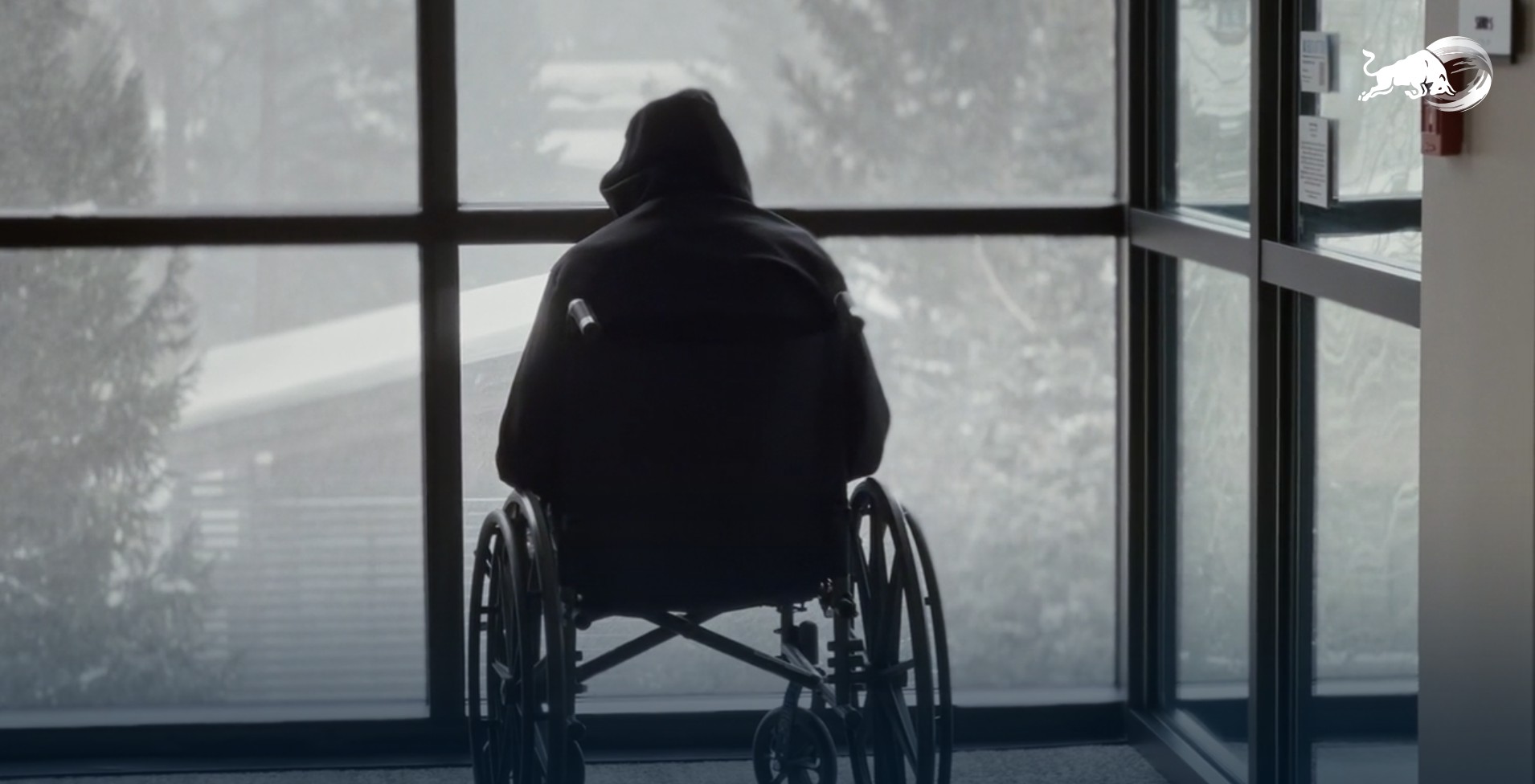
Jones in a wheelchair, preparing to go into another surgery the next morning. Photo: Screenshot
A long recovery
The surgery went well. Kai seemed to have found a way to keep going, with what he calls a “mental adjustment.” He launched into PT and set a goal of walking by his birthday.
On his birthday, two weeks before doctors estimated he could start walking again, he took a few cautious but strong steps. So he set a new goal: to get back to skiing after eight months. Packing his bags, he moved to LA for the summer to work full time with professional physical trainers.
After nine months, he was skiing down the slope again.
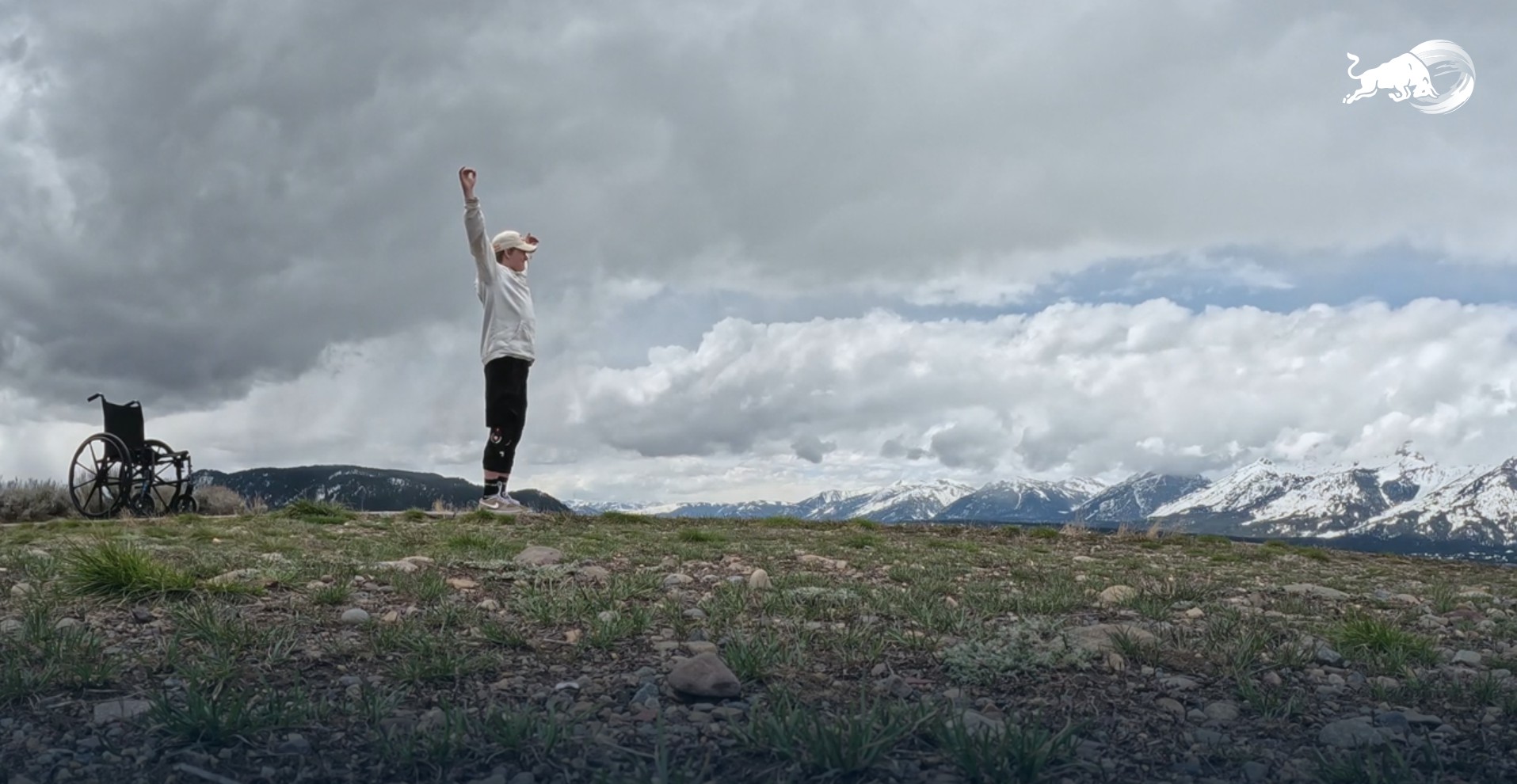
Kai Jones on his birthday, walking again for the first time. Photo: Screenshot
But it was exhausting. And it was painful. It would take incredible amounts of time and work to get back to the level he’d been at, if it was even possible. He was afraid that during that time, the sport, the attention, and the sponsorships might move on. There’s something fairly horrifying about a teenager recovering from near-fatal injuries having to think about things like that.
Kai took a few months to slow down, ski casually with friends, get his driver’s license, and finish school. But only a year after the accident, he was flown to ski in Alaska, where he put his new legs through the ultimate stress test. They held.
The film ends with Kai back on Grand Teton, skiing a particularly challenging line. As he jumps and glides down the slope, interview footage plays. Kai says the accident and almost losing it all have given him “a new start.”
We can’t embed this film, but you can watch it here on the Red Bull website.
